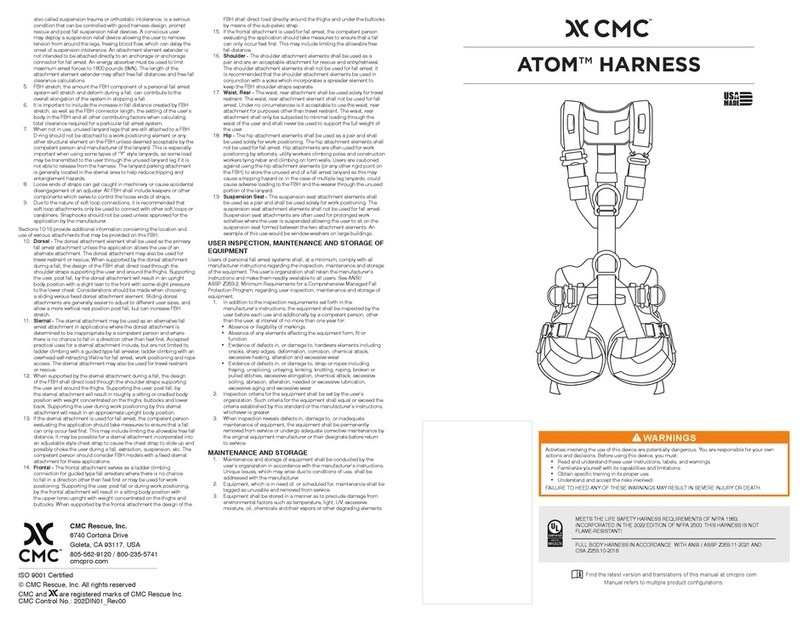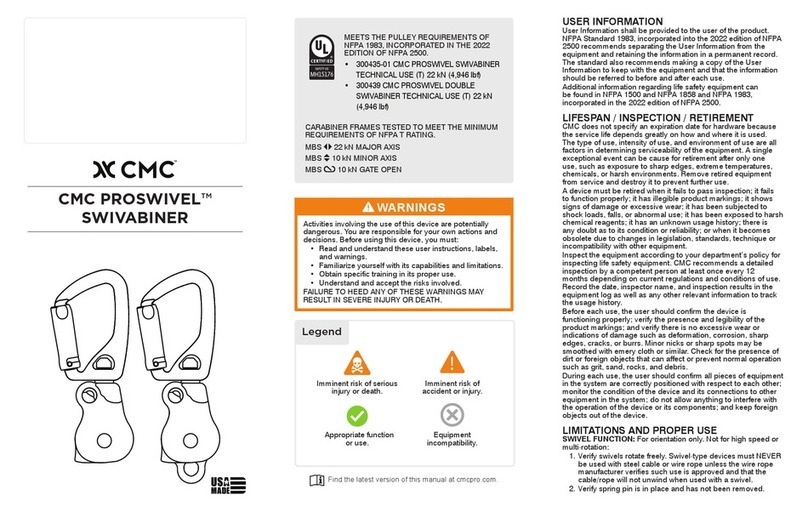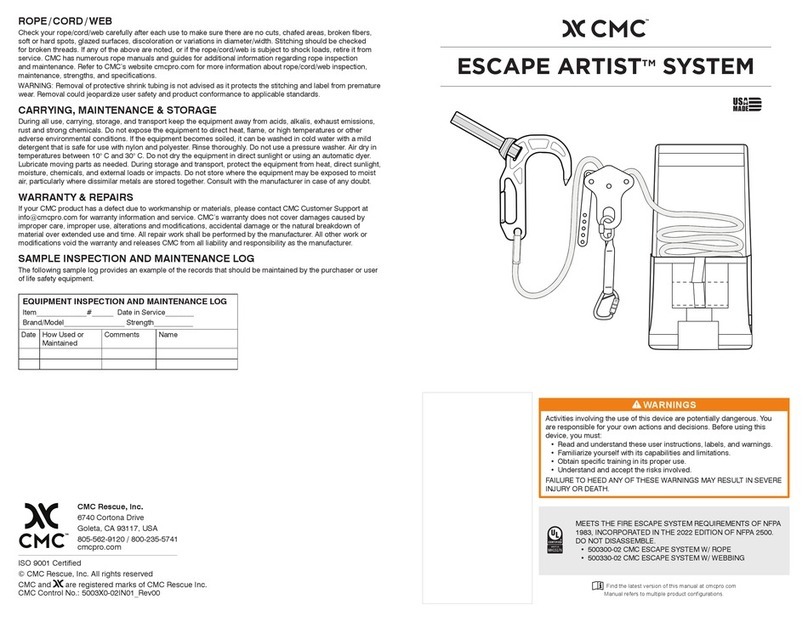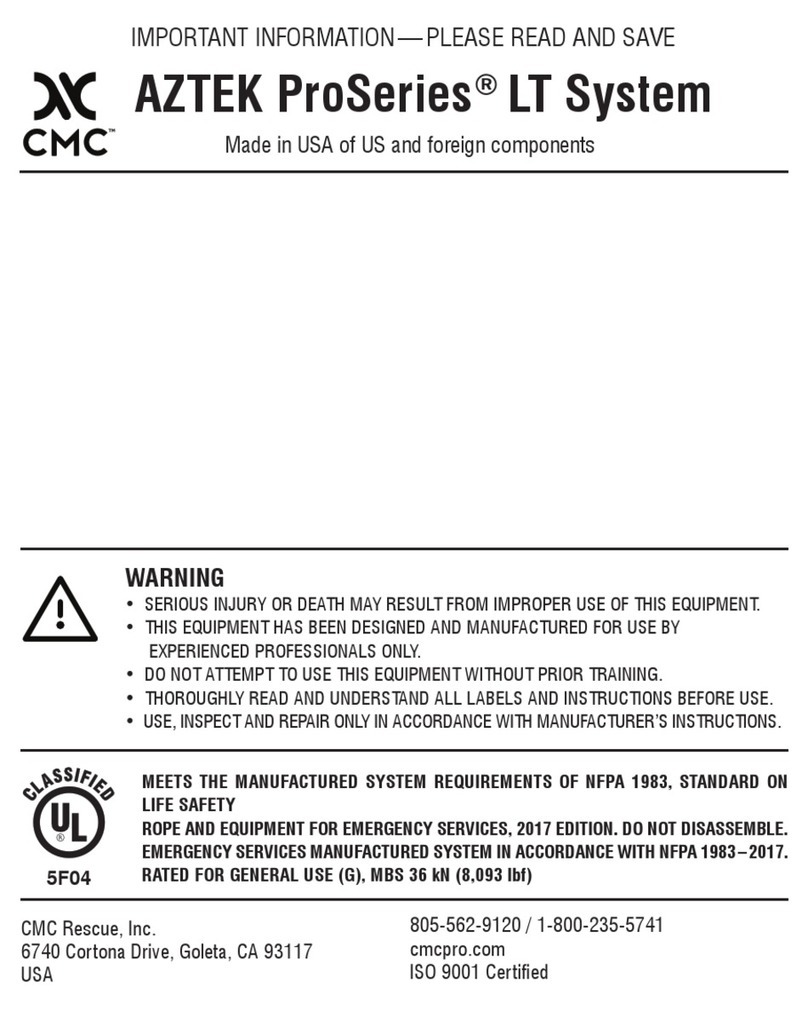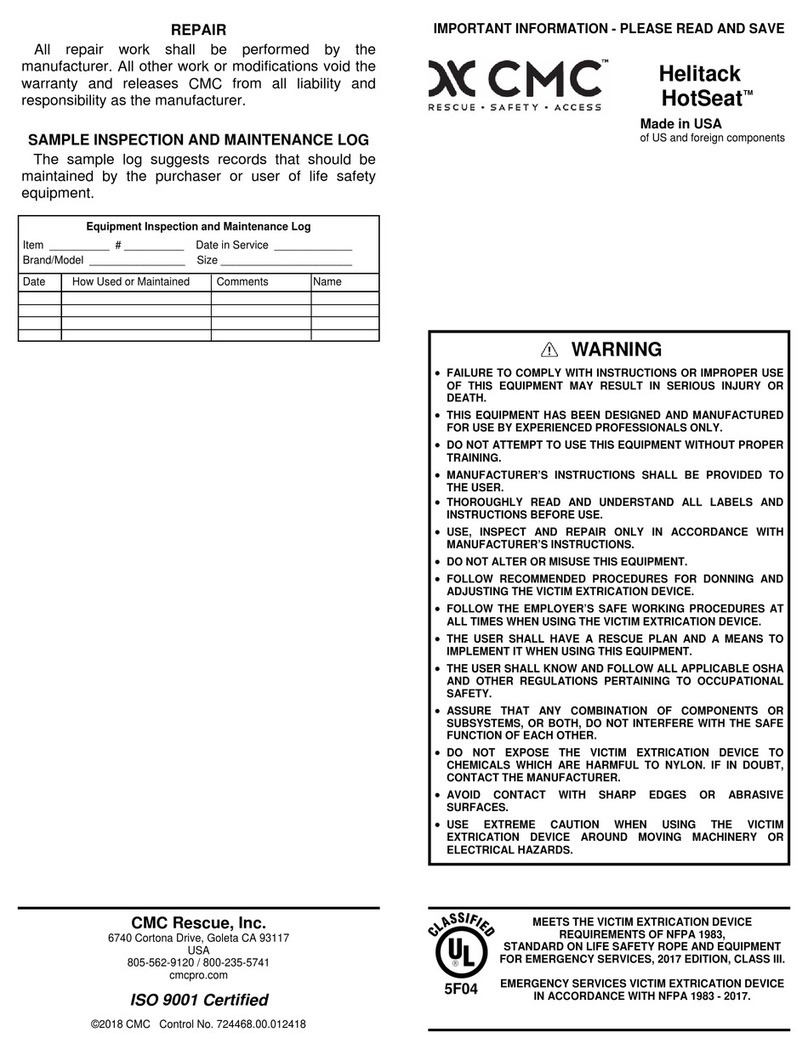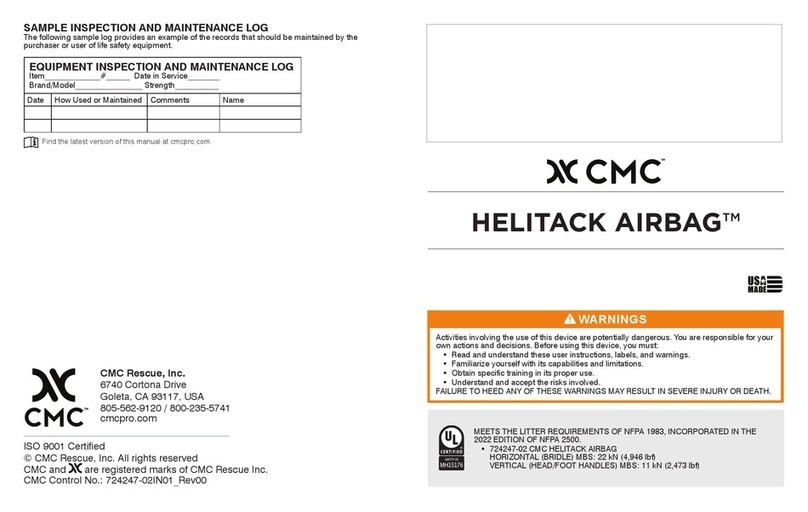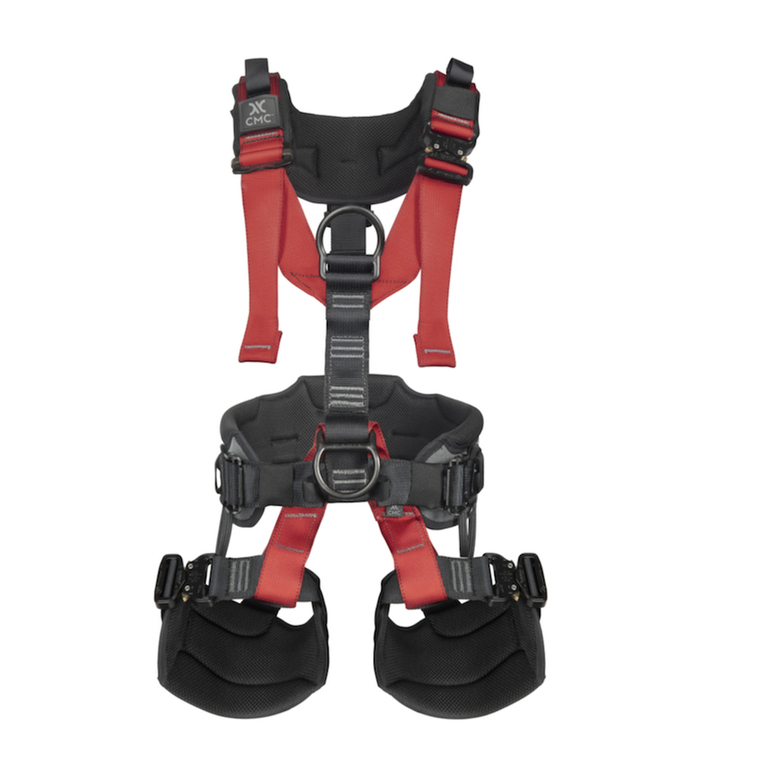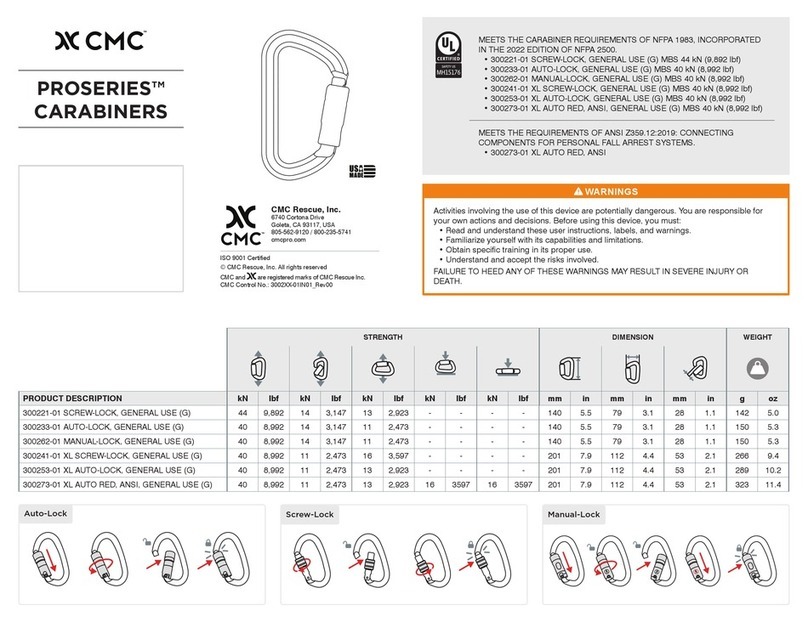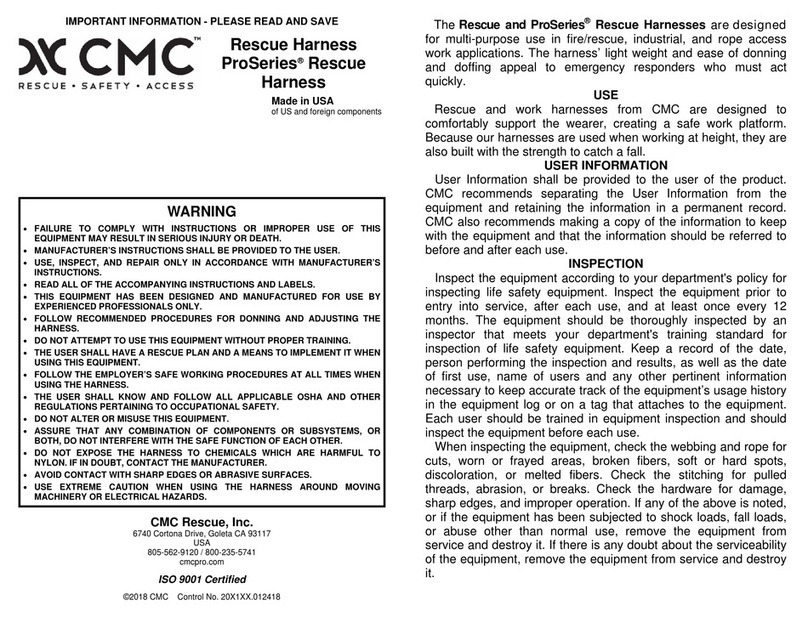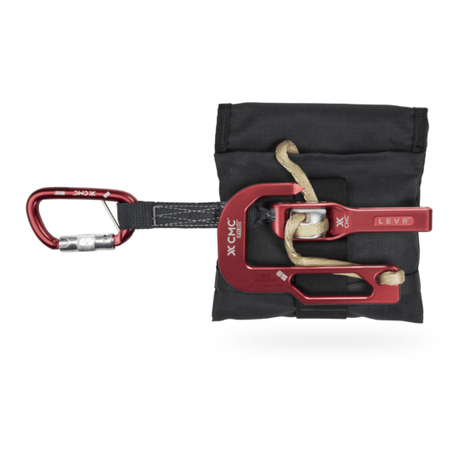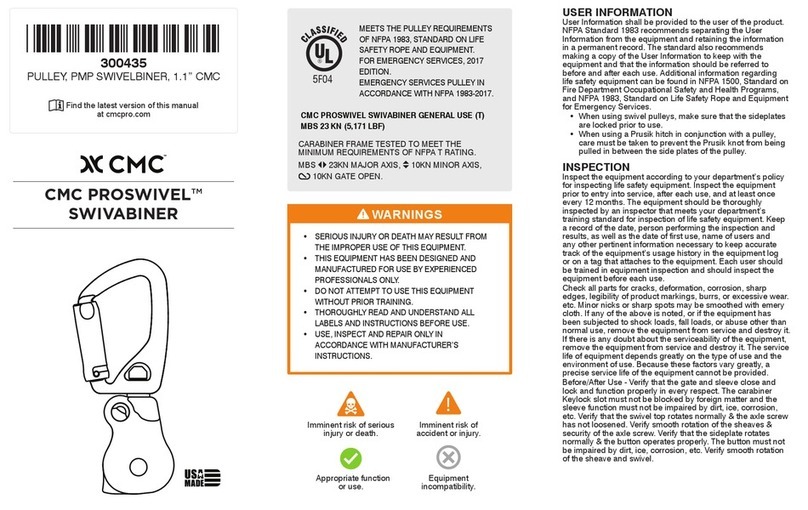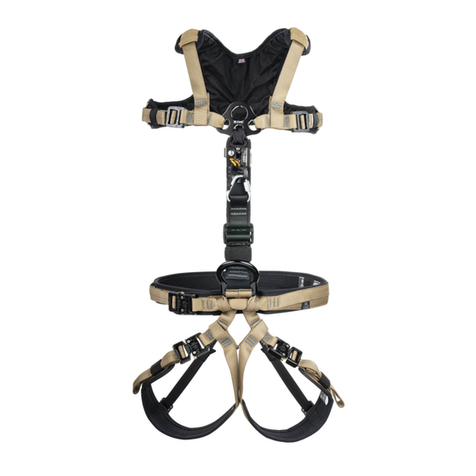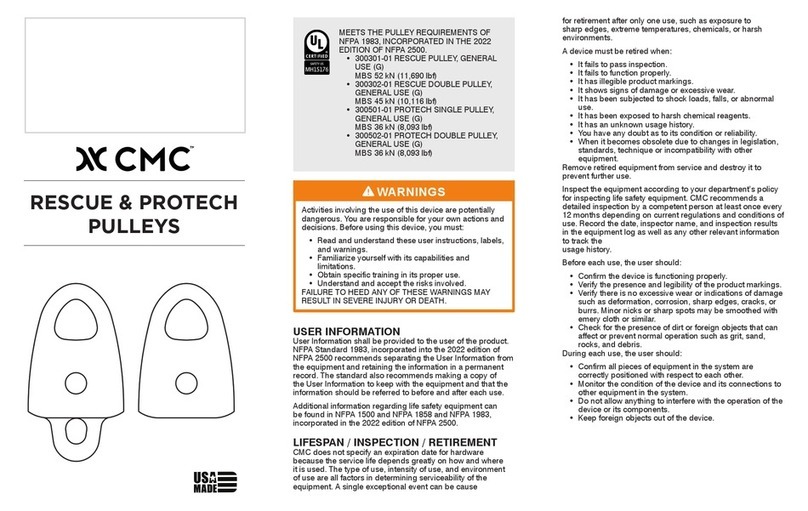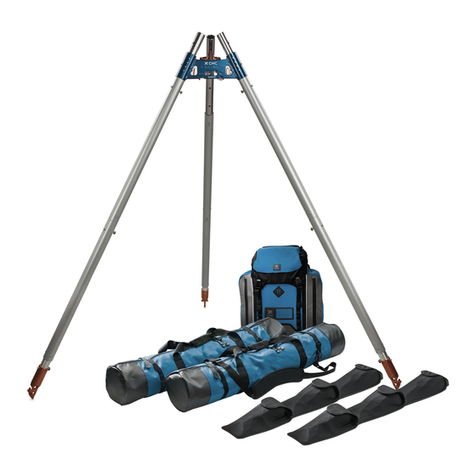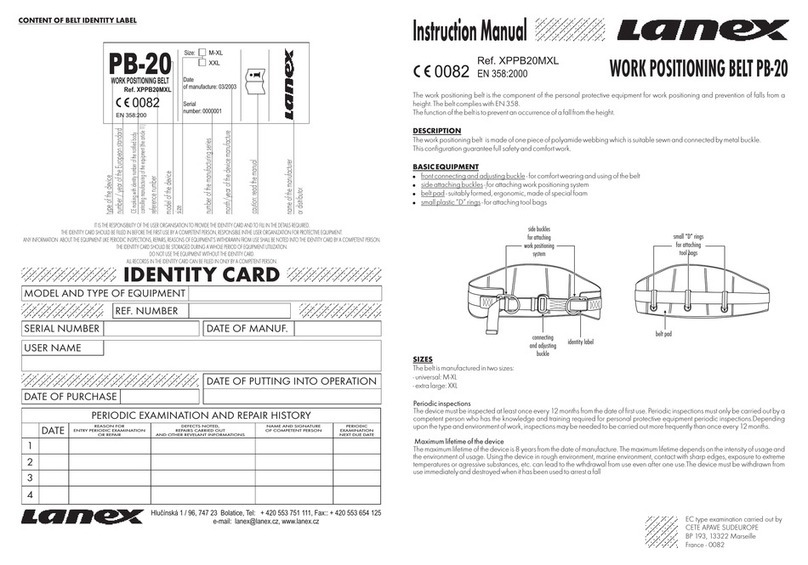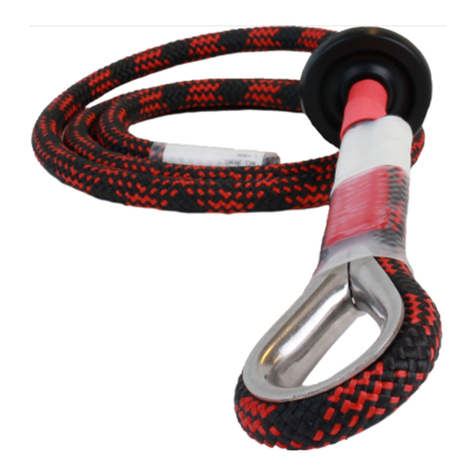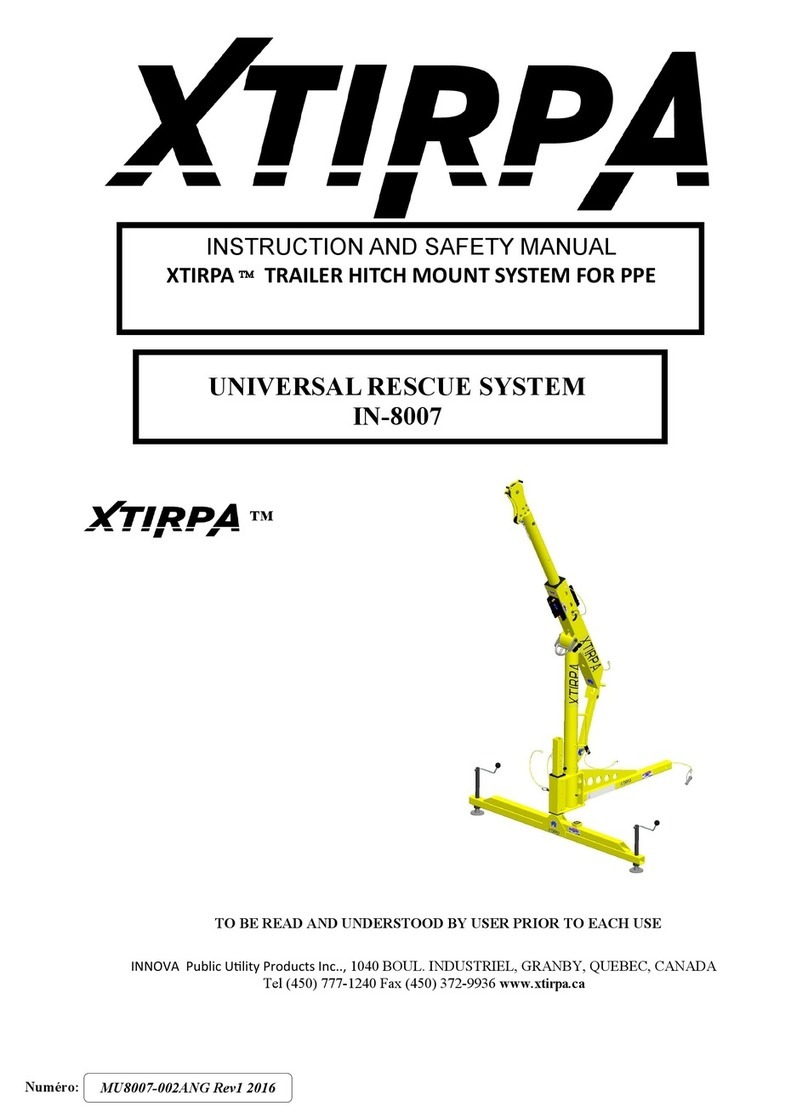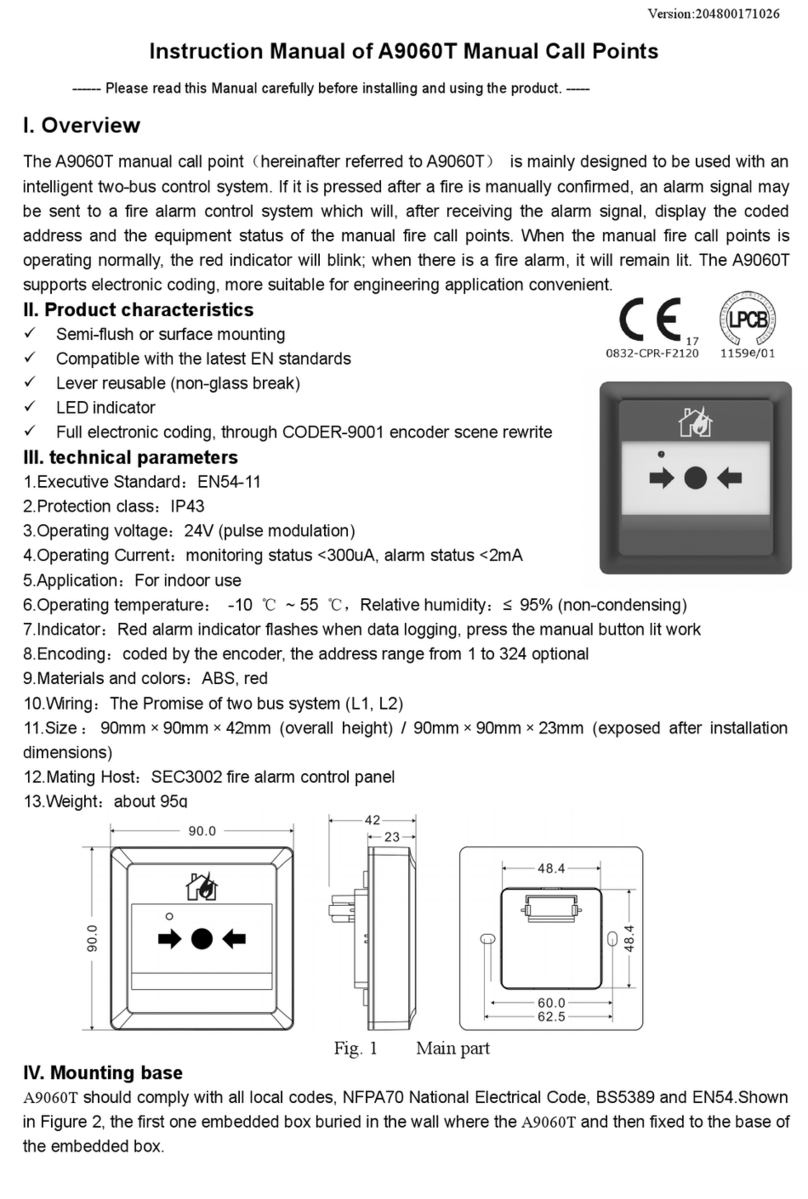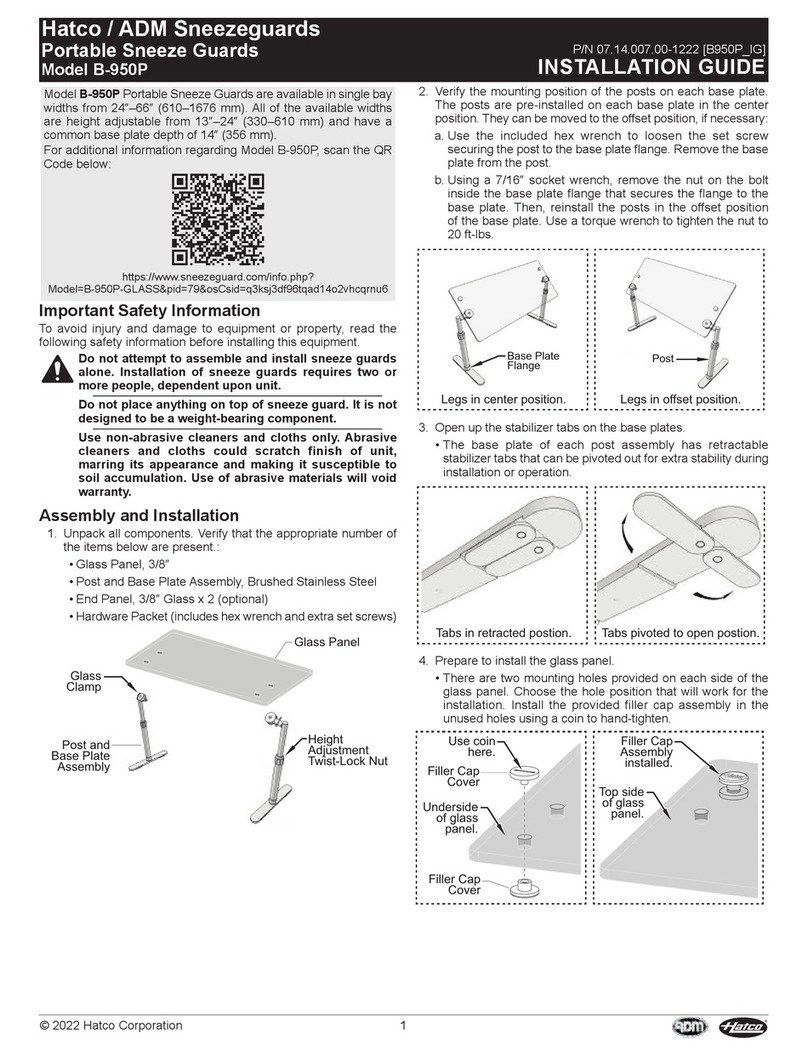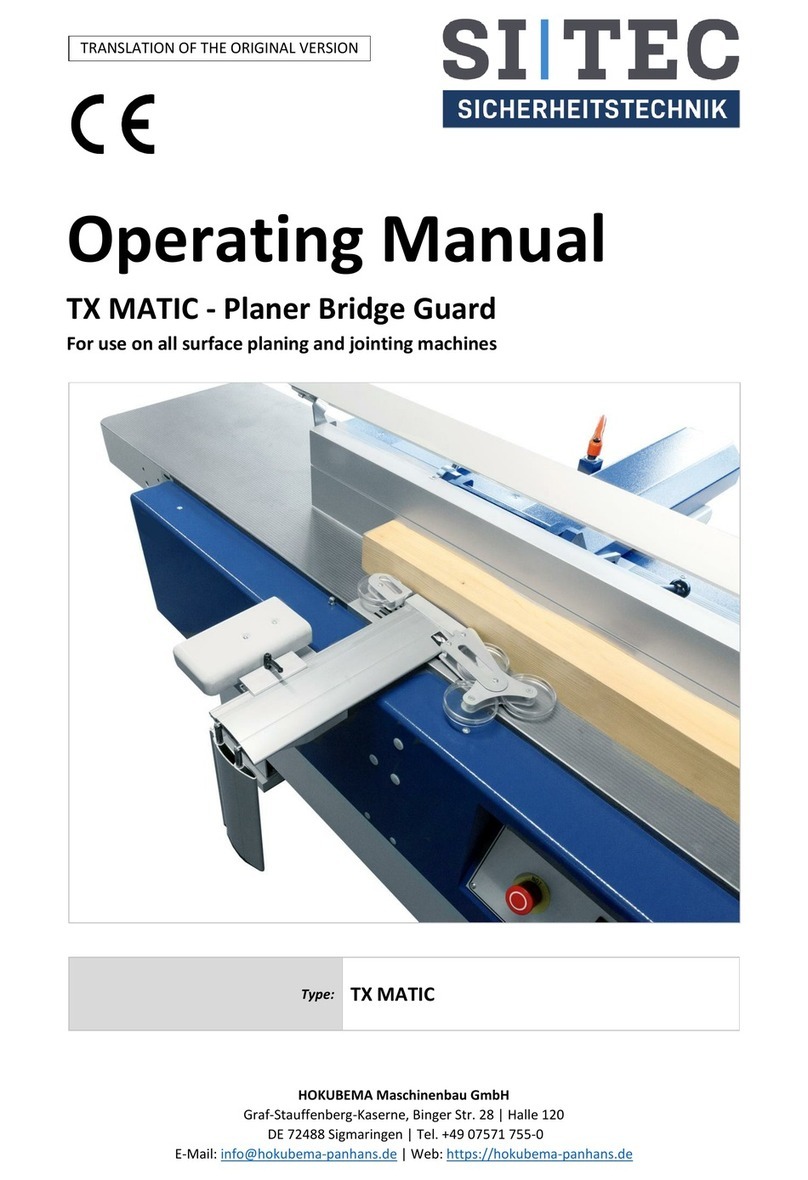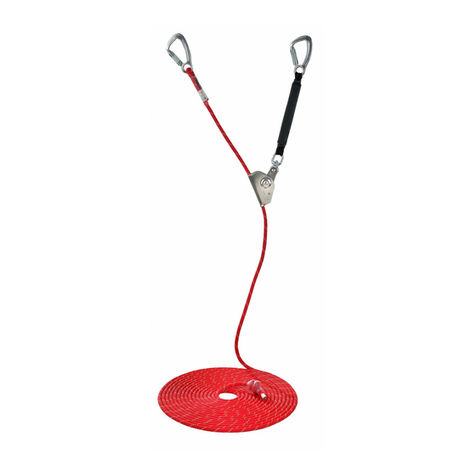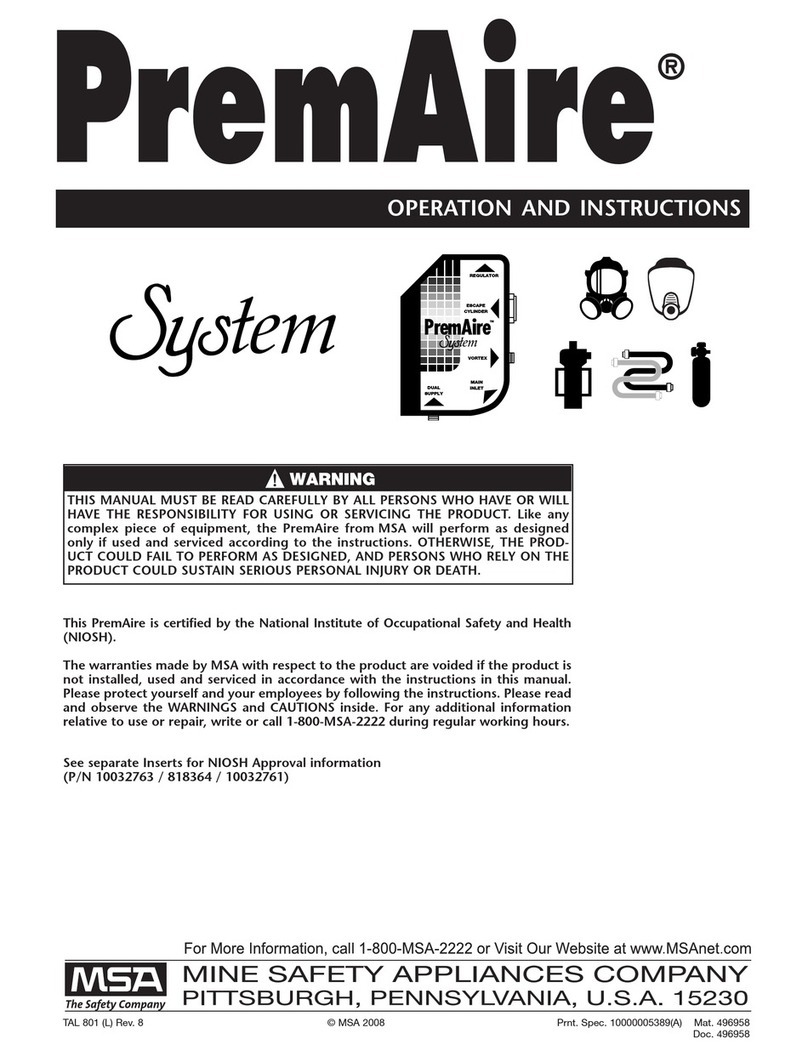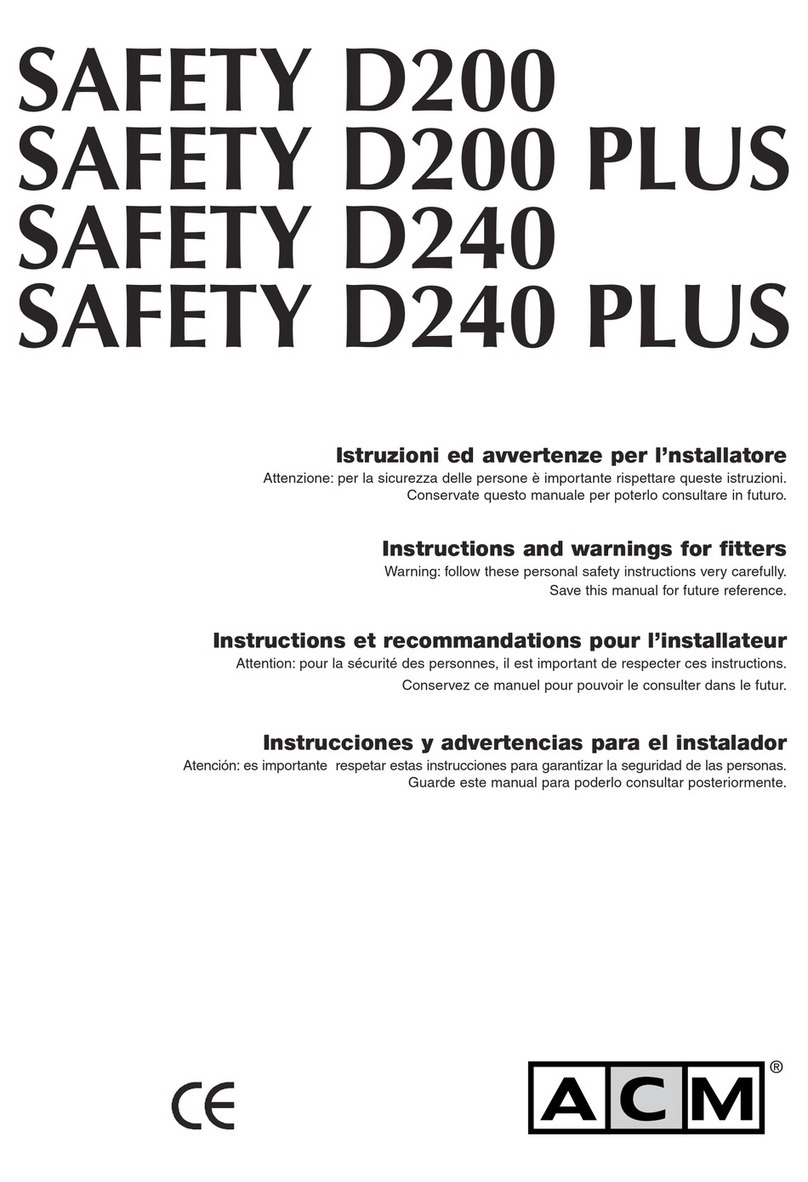
10 |CMCPRO.COM |SQUID RIG PLATE USER MANUAL 11
EN
1. FIELD OF APPLICATION
The SQUID rigging plate is designed and
manufactured as personal protective equipment
(PPE) used for fall protection during work, rescue,
and technical operations. It is classied to NFPA
2500 (1983), 2022 Edition as Load Bearing
Auxiliary Hardware. The SQUID is a rigging plate
in accordance with PPE-R/RFU 11.114 Version 01,
Regulation (EU) 2016/425, and CMC Technical
Specication, No. 300020TS01. The SQUID shall
not be used outside of its limitations, or for any
purpose other than that for which it is intended.
Responsibility
These instructions explain the correct use of your
equipment. The warning symbols inform you of
some potential dangers related to the use of your
equipment, but it is impossible to describe them
all. You are responsible for heeding each warning
and using your equipment correctly. Any misuse of
this equipment will create additional dangers. Con-
tact CMC if you have any questions or difculty
understanding these instructions. Check cmcpro.
com for updates and additional information.
Before using this equipment, you must have a
rescue plan in place to deal with any emergencies
that could arise and be medically t and capable
of controlling your own security in emergency
situations. Motionless suspension in a harness
may cause severe injury or death. Check
equipment before and after use. No alterations or
additions to the equipment shall be made without
the manufacturer’s written consent.
User Information
User Information shall be provided to the user of
the product. NFPA 1983, incorporated into the
2022 edition of NFPA 2500 recommends separat-
ing the User Information from the equipment and
retaining the information in a permanent record.
The standard also recommends making a copy of
the User Information to keep with the equipment
and that the information should be referred to
before and after each use.
Additional information regarding life safety equip-
ment can be found in NFPA 1500, and NFPA 1858
and NFPA 1983, incorporated in the 2022 edition
of NFPA 2500. This document must be provided to
the user by the retailer in the respective country’s
language and must be kept with the equipment
while it is in use. Observe relevant national
regulations.
2. TRACEABILITY &
MARKINGS
(A) Manufacturer and Product Name (B) Standard
Marking (C) Load Conguration Diagram (D) Read
the Instructions for Use Carefully (E) CE mark
and Number of the Body Controlling Production
of this PPE (F) Model Identication (G) Individual
Number:
3. NOMENCLATURE
(A) Primary Attachment Point (B)Secondary
Attachment Points
4. COMPATIBILITY
Verify that this product is compatible with the other
equipment in the system and that its intended
applications meet current standards. Equipment
used with this product must meet regulatory
requirements in your jurisdiction and/or country,
and provide safe, functional interaction.
Always verify that connectors are properly
positioned before loading them. The SQUID
attachment points are designed to accept multiple
connectors. Ensure the multiple connectors can
move freely. Equipment used with the SQUID must
meet current standards in your country.
When combining this product with other equipment
and/or using this product in a rescue/fall arrest
system, users must understand the instructions of
all components prior to use and comply with them
to ensure that safety aspects of these items do not
interfere with each other.
Danger may arise and functionality may be
compromised by combining other equipment with
this product. User assumes all responsibility for
non-standard use or added components. Contact
CMC if you are uncertain about the compatibility
of your equipment.
The SQUID attachment points are primarily
designed for use with carabiners and are also
compatible with a variety of other connection meth-
ods. All connections should be evaluated for
risk based on the loads, redundancy, and rigging
practices involved.
WARNING: The breaking strength of textiles may
be reduced when directly connected to the SQUID.
CMC recommends following best practices for
redundancy and load sharing when making
connections.
5. INSPECTION, POINTS TO
VERIFY
Inspection
User safety depends on equipment integrity.
Equipment should be thoroughly inspected prior
to being placed into service and before and after
each use. Inspect the equipment according to your
department’s policy for inspecting life safety equip-
ment. In addition, CMC recommends a detailed
inspection by a competent person at least once
every 12 months depending on current regulations
and conditions of use. Record the date, inspector
name, and inspection results in the equipment log
as well as any other relevant information to track
the usage history.
Before & after each use, the user should:
• Conrm the device is functioning properly.
• Verify the presence and legibility of the product
markings.
• Verify there is no excessive wear or indications
of damage such as deformation, corrosion,
sharp edges, cracks, or burrs. Minor nicks
or sharp spots may be smoothed with emery
cloth or similar.
• Check for the presence of dirt or foreign objects
that can affect or prevent normal operation such
as grit, sand, rocks, and debris.
During each use, the user should:
• Conrm all pieces of equipment in the
system are correctly positioned with respect
to each other.
• Monitor the condition of the device and its
connections to other equipment in the system.
• Do not allow anything to interfere with the
operation of the device or its components.
• Avoid placing the device and attached connec-
tors against an edge or sharp corner.
• Reduce the risk of shock load by minimizing
slack in the system.
Retirement
CMC does not specify an expiration date for
hardware because the service life depends greatly
on how and where it is used. The type of use,
intensity of use, and environment of use are all
factors in determining serviceability of the equip-
ment. A single exceptional event can be cause for
retirement after only one use, such as exposure to
sharp edges, extreme temperatures, chemicals, or
harsh environments.
A device must be withdrawn from service when:
• It fails to pass inspection.
• It fails to function properly.
• It has illegible product markings.
• It shows signs of damage or excessive wear.
• It has been subjected to shock loads, falls, or
abnormal use.
• It has been exposed to harsh chemical reagents
or extreme environments.
